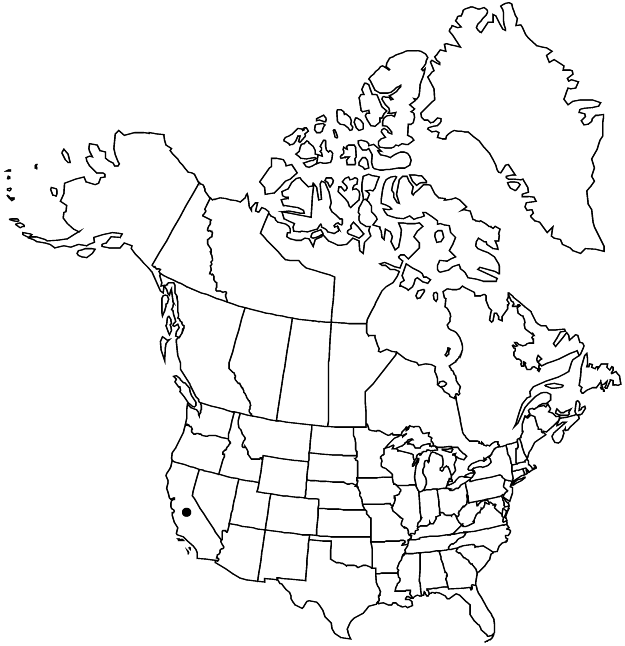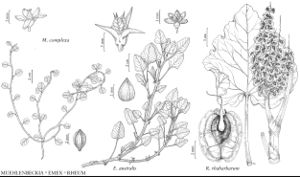Muehlenbeckia complexa
Pl. Vasc. Gen. 2: 227. 1841.
Plants (0.5–)1–5 m. Stems prostrate to scandent, especially distally, sometimes rooting at nodes, striate, branched, glabrescent or puberulent, distal branches brownish-puberulent. Leaves: ocrea deciduous, brownish hyaline, cylindric, 2–3 mm, margins truncate, eciliate, faces puberulent along veins; petiole 3–10 mm, brownish-puberulent; blade ovate-oblong to suborbiculate or panduriform, 0.5–2.5(–4) × 0.5–2.5(–4) cm, coriaceous, base truncate, margins entire, glabrous or scabrous, apex rounded to apiculate, glabrous adaxially and abaxially, or puberulent abaxially along midvein, obscurely punctuate abaxially. Inflorescences terminal and axillary, 5–30 mm. Pedicels ascending to spreading, 1.5–2 mm. Flowers 1–2(–5) per ocreate fascicle; perianth yellowish green or greenish; tepals connate ca. 1/4 their length, lanceolate-ovate to obovate, 2–4 mm, apex rounded to acute. Staminate flowers: anthers pink to purple, ovate to elliptic. Pistillate flowers: tube white in fruit. Achenes exserted or included, black or dark brown, 3-gonous, 3–4 × 2–3 mm, shiny, smooth. 2n = 20 (New Zealand).
Phenology: Flowering Jul–Sep.
Habitat: Sunny, disturbed sites, often in urban areas
Elevation: 0-500 m
Distribution

Calif., Pacific Islands (New Zealand).
Discussion
Muehlenbeckia complexa is cultivated as an ornamental and escapes rarely in the flora area.
Selected References
None.
